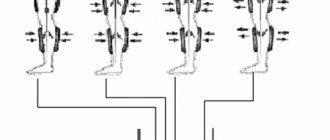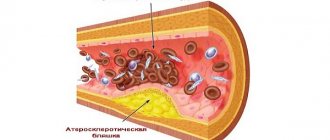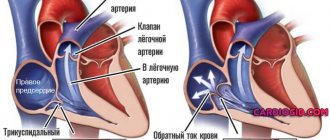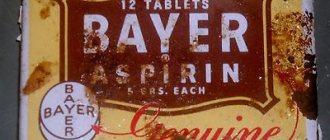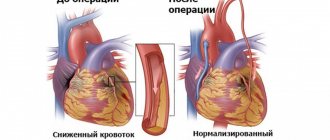Effect on blood pressure
The active ingredient in Nitroglycerin is glycerol trinitrate. Its main purpose is to relieve an attack of angina and relieve pain accompanying colic and spasms. The drug is allowed to be used for diagnosed heart failure, in order to reduce the flow of venous blood to the myocardium.
An additional effect is the prevention of blood stagnation in the pulmonary circulation. When using the medicine, the myocardium relaxes, vascular spasms are relieved, which ultimately leads to a decrease in blood pressure. Therefore, if we talk about whether this drug increases or decreases blood pressure, then it reduces it.
Nitroglycerin can be taken - if really necessary - with low blood pressure, but it is important to carefully monitor the effect of the drug on the body and accompanying symptoms. If dizziness or nausea occurs, use should be stopped immediately.
Important! At what blood pressure should you not take Nitroglycerin? The product is prohibited for use at blood pressure of 100/60. Since the medicine reduces the indicators, it is possible that blood pressure will drop to a critical level.
Story
The history of nitroglycerin begins with the Italian chemist Ascaño Sobrero. He first synthesized this substance in 1846. It was originally given the name pyroglycerin. Already Sobrero discovered its great instability - nitroglycerin could explode even from weak shocks or impacts.
The explosive power of nitroglycerin theoretically made it a promising reagent in the mining and construction industries - it was much more effective than the types of explosives that existed at that time. However, the mentioned instability created too great a threat during its storage and transportation - so nitroglycerin was shelved.
Things moved a little forward with the appearance of Alfred Nobel and his family - father and sons established industrial production of this substance in 1862, despite all the dangers associated with it. However, what had to happen sooner or later happened - there was an explosion at the factory, and Nobel’s younger brother died. After suffering grief, his father retired, but Alfred managed to continue production. To increase safety, he mixed nitroglycerin with methanol - the mixture was more stable, but very fire hazardous. It still wasn't a final decision.
It was dynamite - nitroglycerin absorbed by kieselguhr (sedimentary rock). The explosiveness of the substance has decreased by several orders of magnitude. Later, the mixture was improved, kieselguhr was replaced with more effective stabilizers, but the essence remained the same - the liquid was absorbed and stopped exploding at the slightest shock.
Indications for use
Indications for the use of Nitroglycerin are not too numerous. The drug is used in the following cases:
- decrease in blood pressure;
- normalization of myocardial function;
- relief of an attack of angina of any strength;
- myocardial ischemia;
- swelling of lung tissue;
- hypertensive crisis;
- improving the patency of the gastrointestinal tract (gastrointestinal tract) and biliary tract;
- acute pancreatitis;
- reduction of pressure during neurosurgical operations.
Self-administration of the medication is unacceptable. The attending physician must decide whether Nitroglycerin can be taken or not.
Stabilization of nitroglycerin. Dynamite
Nobel's first experiment in stabilizing nitroglycerin was dynamite - kieselguhr completely absorbed the liquid, and the mixture was safe (until, of course, it was activated in a demolition bomb). The reason why diatomaceous earth is used is the capillary effect. The presence of microtubules in this rock determines the effective absorption of liquid (nitroglycerin) and its retention there for a long time.
Mode of application
There are specific instructions for using Nitroglycerin for high blood pressure. In order for the drug to provide the expected effect, the following rules must be observed:
- capsule - open it and place it under the tongue;
- tablet - place half under the tongue and wait for it to dissolve on its own;
- alcohol solution - pour 2 drops onto a piece of sugar or drop the same volume under the tongue;
- spray - spray the dose under the tongue.
Severe migraines are one of the possible reactions to starting to take the drug, caused by a sharp dilation of blood vessels
Before using the medicine, you need to sit down/lie down, as the medicine can cause severe dizziness. The permissible single dosage of tablets and capsules is 1 (for a single dose) and 5 (for a daily dose). Alcohol solution – 4 drops (one-time) and 16 drops (daily). After taking the medication, it is necessary to measure blood pressure every 15 minutes.
If its level remains unchanged, you can take another tablet/capsule or take 2 more drops. But usually the effect of Nitroglycerin begins one to two minutes after administration and lasts about half an hour. The maximum duration of use is a month. Subsequently, addiction develops, and the effectiveness of treatment decreases significantly.
Reception features
Nitroglycerin should be taken in a sitting or lying position, especially for older people, since the development of dizziness and fainting is possible. If the therapeutic effect does not occur, then after two minutes you must take the next dose. The intervals between them are 5 minutes. The total number of receptions is 3 times. The dosage at the first dose should not exceed ½ tablet.
This will allow you to assess the tolerability of the drug. For older people, the dosage is also ½ tablet. The recommendation is due to the possibility of developing fainting conditions. If nitroglycerin drops are used, it is best to apply a single dose (2 drops) to a piece of sugar and dissolve. If this is not possible, then drip the same amount of product under the tongue.
How to reduce blood pressure using folk remedies?
And you also need to remember the following recommendations:
- After the first dose of the drug, a person may develop migraines. The reason is the rapid expansion of the lumens of blood vessels and a drop in blood pressure levels. After several days of use, the headaches weaken and disappear completely. This is a normal reaction of the body to the drug, it continues to work actively, the body has simply adapted and does not react so painfully. The recommended dosage cannot be increased. In this case, getting rid of migraines will be very problematic.
- 5 hours after taking the dose, it is possible that pain in the heart area may develop. The reason is the removal of the drug from the myocardium. The muscle begins to work in the same mode, which provokes painful sensations. To stabilize your health, you need to take the next dose.
- If after taking the capsule the pain does not stop within the next 15 minutes, you can put another capsule under the tongue.
The red capsules contain an oil solution of nitroglycerin. After two months of regular use of the drug, the body begins to get used to it, so it becomes ineffective. To avoid this, you need to take a break after taking it for a month.
To prevent addiction to Nitroglycerin, doctors recommend taking any form of the drug no earlier than after 5 hours. This will allow the active substances to completely leave the blood, and the body will receive a “new” dose each time.
If you have low blood pressure, use the medicine with extreme caution. If you exceed the dosage, you can get severe migraines, dizziness and fainting. If you have glaucoma, use Nitroglycerin only after consultation with your doctor.
In rare cases, vision deterioration occurs during treatment. An increase in intraocular pressure is possible. In both cases, therapy must be stopped immediately. It is important to remember that a physician should select the dosage, taking into account the current clinical picture. An overdose can cause severe nausea, paleness of the skin and mucous membranes, and loss of consciousness.
Obtained in the laboratory
The reaction for producing nitroglycerin in the laboratory is now still the same as that used by Sobrero - esterification in the presence of sulfuric acid. First, a mixture of nitric and sulfuric acids is taken. Acids need to be concentrated, with a small amount of water. Next, glycerin is gradually added to the mixture in small portions with constant stirring. The temperature must be kept low, since in a hot solution, instead of esterification (ester formation), oxidation of glycerol with nitric acid will occur.
But since the reaction releases a large amount of heat, the mixture must be constantly cooled (usually this is done with ice). As a rule, it stays around 0 ° C; exceeding 25 ° C can lead to an explosion. Temperature is monitored continuously using a thermometer.
Nitroglycerin is heavier than water, but lighter than mineral (nitric and sulfuric) acids. Therefore, in the reaction mixture the product will lie in a separate layer on the surface. After the reaction is completed, the vessel must be cooled further, wait until the maximum amount of nitroglycerin has accumulated in the top layer, and then pour it into another container with cold water. Then comes intensive washing in large volumes of water. This is necessary in order to clean nitroglycerin as best as possible from all impurities. This is important, because when combined with the remains of unreacted acids, the explosive hazard of the substance increases several times.
Symptoms of angina
The main symptom of the onset of an attack is pain in the heart area. It is characterized by:
- pressing, squeezing character;
- course in attacks, with intensification and weakening;
- localization in the upper or middle part of the chest with a return to the left arm;
- gradual increase;
- abrupt cessation after eliminating the cause or taking nitroglycerin.
- feeling of fear and anxiety (popularly “angina pectoris”)
Sometimes patients confuse the symptoms of angina with osteochondrosis of the cervicothoracic region, arthrosis of the shoulder joint, and lung disease. In people with a high threshold for pain sensitivity, angina generally manifests itself as mild discomfort in the chest. Instead of pain, the patient may complain of shortness of breath, or suffocation, heartburn, or attacks of weakness in the left arm.
Nitroglycerin drug overdose, symptoms and treatment
Manifested by a decrease in blood pressure (below 90 mm Hg), orthostatic reactions, reflex tachycardia, headache, dizziness, drowsiness, feeling of heat, nausea, vomiting, with a significant overdose (more than 20 mg/kg) - collapse, cyanosis, methemoglobinemia, dyspnea and tachypnea. If symptoms of overdose develop, stop further administration and remove the patch. The head end of the bed should be lowered and the patient's legs should be raised. As a rule, blood pressure normalizes within 15–20 minutes after stopping the administration of nitroglycerin, then administration can be continued after the infusion rate has been re-established. To correct blood pressure, it is possible to use phenylephrine, epinephrine and other vasoconstrictors. For methemoglobinemia, depending on the severity, ascorbic acid 1 g is prescribed orally or in the form of a sodium salt intravenously; IV methylene blue 0.1–0.15 ml/kg 1% solution (up to 50 ml), oxygen therapy, hemodialysis, exchange blood transfusion.
List of pharmacies where you can buy Nitroglycerin:
- Moscow
- Saint Petersburg
Industrial production
In industry, the process of producing nitroglycerin has long been automated. The system that is currently used, in its main aspects, was invented back in 1935 by Biazzi (and that’s what it’s called - the Biazzi installation). The main technical solutions in it are separators. The primary mixture of unwashed nitroglycerin is first separated into two phases in the separator under the influence of centrifugal forces - the one with nitroglycerin is taken for further washing, and the acids remain in the separator.
The remaining stages of production coincide with the standard ones. That is, mixing glycerin and a nitrating mixture in a reactor (produced using special pumps, mixed with a turbine mixer, more powerful cooling using freon), several washing stages (with water and slightly alkaline water), before each of which there is a stage with a separator.
The Biazzi installation is quite safe and has a fairly high productivity compared to other technologies (however, a large amount of product is usually lost during washing).
Home conditions
Unfortunately, although, rather, fortunately, the synthesis of nitroglycerin at home is associated with too many difficulties, overcoming which is generally not worth the result.
The only possible method of synthesis at home is to obtain nitroglycerin from glycerin (as in the laboratory method). And here the main problem is sulfuric and nitric acids. The sale of these reagents is permitted only to certain legal entities and is strictly controlled by the state.
The obvious solution is to synthesize them yourself. Jules Verne in his novel “The Mysterious Island,” talking about the episode of the production of nitroglycerin by the main characters, omitted the final moment of the process, but described in great detail the process of obtaining sulfuric and nitric acids.
Those who are really interested can look into the book (the first part, chapter seventeen), however, there is a catch here - the uninhabited island was literally replete with the necessary reagents, so the heroes had at their disposal sulfur pyrites, algae, a lot of coal (for burning), potassium nitrate, and so on. Will the average addicted person have this? Hardly. Therefore, homemade nitroglycerin in the vast majority of cases remains just a dream.
Causes of angina pectoris
Oxygenated blood enters the heart muscle through the coronary arteries. They can become clogged, causing partial obstruction. In this case, the heart does not receive sufficient blood flow, and an attack of angina develops.
Angina pectoris is more common in people over 50 years of age because the coronary arteries lose elasticity. The more they become denser, the higher the likelihood of developing obstruction. Compaction may occur faster due to:
- stress and excessive exercise
- decisions to suddenly go in for sports without appropriate preparation (cardio loads);
- smoking, excessive alcohol consumption;
- eating foods that cause high cholesterol;
- predisposition – genetic, age-related;
- physiological reasons - cholesterol above 3.6-5.2 mmol/l, high blood pressure, obesity, diabetes.
Angina pectoris: what not to do
- endure pain, refuse to take medications;
- postpone visiting a doctor if attacks occur constantly;
- exceed the maximum dose of drugs;
- continue to abuse alcohol, overeat fatty, fried foods.
ATTENTION! If you are concerned about chest pain, consult a cardiologist! You should not take medications without consulting a specialist.
The Medicenter clinic employs cardiologists with extensive experience, and also has modern diagnostic equipment, thanks to which the doctor can determine the most appropriate treatment regimen and prevention of angina pectoris.
Side effects of the drug Nitroglycerin
dizziness, “nitrate” headache, tachycardia, skin flushing, feeling of heat, decreased blood pressure; rarely (mainly in case of overdose) - orthostatic collapse, cyanosis; feeling of dry mouth, nausea, vomiting, abdominal pain; rarely (mainly in case of overdose) - anxiety, psychotic reactions, lethargy, disorientation; rarely - allergic reactions (skin itching, rash); local reactions during transdermal use: hyperemia and itching of the skin, burning, allergic contact dermatitis; blurred vision, general weakness, hypothermia, methemoglobinemia.
Drug interactions Nitroglycerin
Concomitant use with vasodilators, antihypertensive drugs, ACE inhibitors, beta-adrenergic blockers, calcium antagonists, procainamide, tricyclic antidepressants, MAO inhibitors, phosphodiesterase inhibitors, and ethanol enhances the hypotensive effect of nitroglycerin. Prescription with dihydroergotamine can lead to an increase in its content in the blood and an increase in blood pressure (increased bioavailability of dihydroergotamine). Nitroglycerin should be combined with heparin with caution.
Special instructions for the use of the drug Nitroglycerin
Use with caution, given the possible risk, in cases of recent traumatic brain injury, acute myocardial infarction (risk of decreased blood pressure and tachycardia, which can increase ischemia), glaucoma (risk of increased intraocular pressure), severe anemia, hyperthyroidism, arterial hypotension with low systolic Blood pressure (can aggravate the condition, causing paradoxical bradycardia and angina attacks), hypertrophic cardiomyopathy (possible increased frequency of angina attacks), severe renal failure, liver failure (risk of developing methemoglobinemia), during pregnancy and lactation, in children. In acute myocardial infarction or acute heart failure, it should be used only under the condition of careful clinical observation and monitoring of hemodynamic parameters. To prevent an increase in angina attacks, abrupt withdrawal should be avoided. During the treatment period, it is necessary to refrain from driving vehicles and engaging in potentially hazardous activities that require increased concentration and speed of psychomotor reactions. While taking nitroglycerin, there may be a significant decrease in blood pressure and the appearance of dizziness when suddenly moving to a vertical position from a lying or sitting position; when drinking ethanol, exercising, and in hot weather. It is also possible that angina may increase with a sharp decrease in blood pressure, ischemia up to myocardial infarction and sudden death. With frequent use without intervals, tolerance to nitrates may develop, requiring an increase in dose. The severity of headaches while taking nitroglycerin can be reduced by reducing the dose of nitroglycerin and/or simultaneously taking validol.
